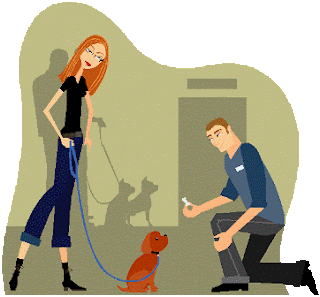 Dog training triumph stems from great correspondence. This is the thing that separates dog trainers from whatever is left of us - that is the thing that makes them so viable in terms of altering a canine's conduct from the back to the front. Actually, a huge part of a mentor's work is to help managers correspond with their pets. Trainers give pet possessors the nuts and bolts of the vocabulary, certain summons that the coach has taught the canine. This vocabulary is influential however troublesome for an outcast to grasp.
Dog training triumph stems from great correspondence. This is the thing that separates dog trainers from whatever is left of us - that is the thing that makes them so viable in terms of altering a canine's conduct from the back to the front. Actually, a huge part of a mentor's work is to help managers correspond with their pets. Trainers give pet possessors the nuts and bolts of the vocabulary, certain summons that the coach has taught the canine. This vocabulary is influential however troublesome for an outcast to grasp.This guide will clarify two distinctive sorts of canine "vocabulary". Dogs have gained experience from sound prompts for eras and eras however today's cutting edge training strategies frequently incorporate touch and image based signals besides. Your dog mentor will show you how to run about corresponding with your dog in a manner that supplements his or her instructing style however this guide will give you a chance to realize what to envision.
Sound, Touch, and Visual Cues for Canines
This is the place "agreed" sounds become an integral factor. The confirmation may be a straightforward "yup" or "haw", used for indicating when the canine has finished an order adequately. A few trainers utilize clickers with the intention that the sound is uniform assuredly. Obviously, positive sounds can't be utilized on their own - however they don't must be utilized with charges either. A few trainers utilize these confirmed sounds as a part of consolidation with touch and superficial prompts set up of orders.
Touch signs are unpretentious, and frequently utilized by expert trainers who are getting ready dogs for rivalry. Surface prompts are a bit simpler to comprehend. A solitary focus, or even a wave of a heeling stay, is now and then all that a coach needs to send a savvy dog through even the most confused schedules.
Nonverbal correspondence outperforms in uproarious pooch training in home or classrooms, loud stops, in the city, and anyplace else that diversions cause issues. Is your coach passing the mystery of dog correspondence to you throughout every session? Each exceptional coach might as well.


0 comments:
Post a Comment